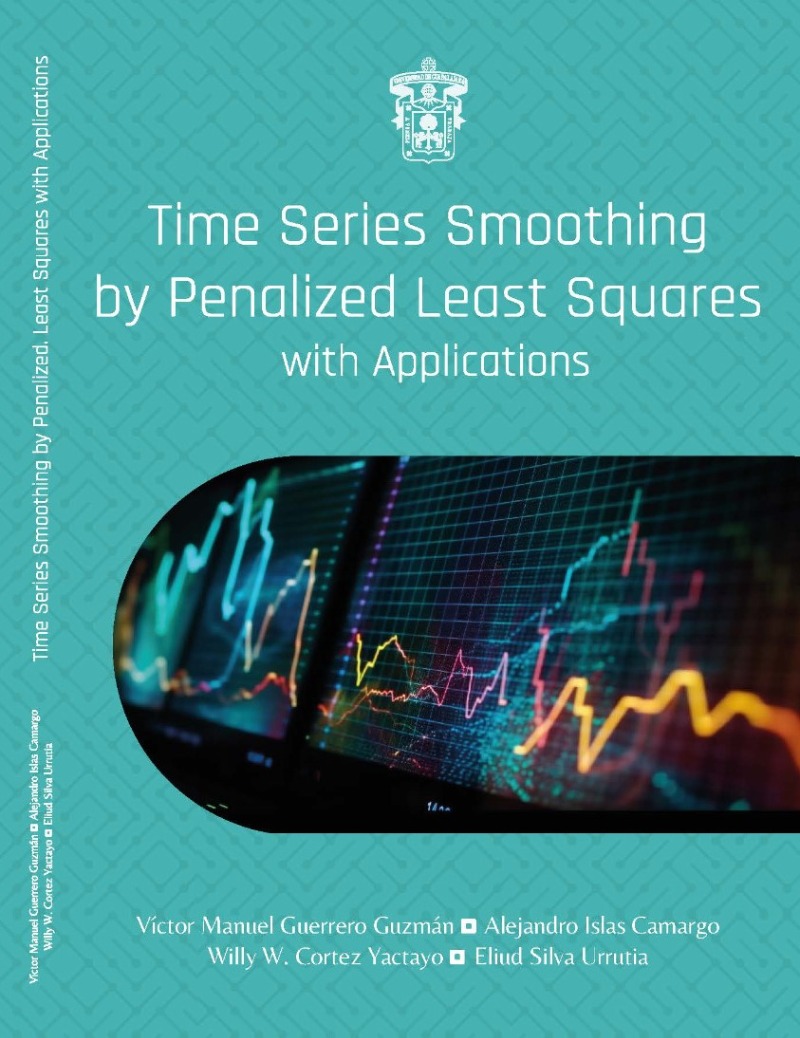
Time Series Smoothing by Penalized Least Squares with Applications
Guerrero Guzmán, Víctor Manuel
Islas Camargo, Alejandro
Cortez Yactayo, Willy Walter
Silva Urrutia, José Eliud
Colaborador:Nieto Delfín, María Rosa (Prologuista)
Editorial:Universidad de Guadalajara
Materia:Probabilidades y matemáticas aplicadas
Público objetivo:Enseñanza universitaria o superior
Publicado:2024-04-30
Número de edición:1
Número de páginas:168
Tamaño:16x22.5cm.
Precio:$320
Encuadernación:Tapa blanda o rústica
Soporte:Impreso
Idioma:Inglés
Libros relacionados
Desarrollo y aplicación de modelos y métodos matemáticos para gestión decisiones - Frías Blanco, Aliuska; Quintero, Anderson; Jarvio-Fernández, Antonia Olivia; López Salas, Ariel Antonio; Viada González, Carmen; David Martínez, Luis; Nicolau Pestana, Elizabeth; Ariza Hernández, Francisco J.; Ariza Hernández, Bouza Allende Gemayqzel; Hasbleidy, Parra; Caamal Cauich, Ignacio; Betancourt Bethancourt, José; Muñoz Chávez, Juana Patricia; García Fernández, Lázara; Hernández Martínez, Lenin; Pineda Celaya, Lourdes del Carmen; Navas, Luis; Balaguera, Manuel Ignacio; Buitrago Solís, María; Varela Guerrero, Mariana; Ojeda Ramírez, Mario Miguel; Fors López, María Martha; Gómez Caicedo, Melva Inés; Gaitán-Angulo, Mercedes; Castro Consuegra, Millelys; Castro Díaz, Omar; Bonfim Primo, Rilton Gonçalo; Sira, Allende Alonso; Beltrán Medina, Valentina; Pat Fernández, Verna Gricel
Estadística y probabilidad - Tec Canche, Manuel Jesús
Actividades prácticas de probabilidad y estadística - Cantú Cuellar, Ramón; Macías López, Ernestina
Una introducción a las series de tiempo - Rincón Solís, Luis Antonio; De Jesús Romo, Verónica
Reseña
This text presents some useful and easy-to-use techniques to estimate trends of time series data without imposing rigid distributional or other type of assumptions. These techniques offer flexibility, particularly for estimating trends routinely and massively. The book provides some generalizations to the ideas embodied in the time series smoothing problem as originally proposed by Víctor M. Guerrero. These generalizations provide some innovative and straightforward ways to calculate trends. The data analyst can objectively choose the desired smoothness, thus enabling comparisons between trends with the same
smoothness level for different sample sizes or periodicity of observation. The value added of this book is that it offers the analyst a remarkable flexibility to estimate trends.
This publication showcases the progress made to solve the Time Series Smoothing problem under Victor M. Guerrero's smart guidance. The smoothing tools presented in this work have evolved, drawing on innovative and complementary methodological approaches.
What sets this book apart is its accessibility. Although deeply rooted in rigorous research, the authors present the material in a way that is easily understandable by postgraduate students, researchers, and analysts alike.
The book is noteworthy for its user-friendly approach by introducing a computational tool programmed in R language, a widely used environment for statistical computing, and graphics available for free. This tool enables analysts to fix various parameters, such as the
order of differentiation, the smoothing level, and the width of the estimation intervals, with no need of programming or coding. By accessing this online platform, users can easily load time series data and experiment with different degrees of smoothing. The results of these
experiments are immediately visualized, allowing analysts to gain a deeper understanding of how each of these parameters modify the results. In summary, this book provides a comprehensive guide for those who wish to delve deeper into the intricacies of time series smoothing issues.




